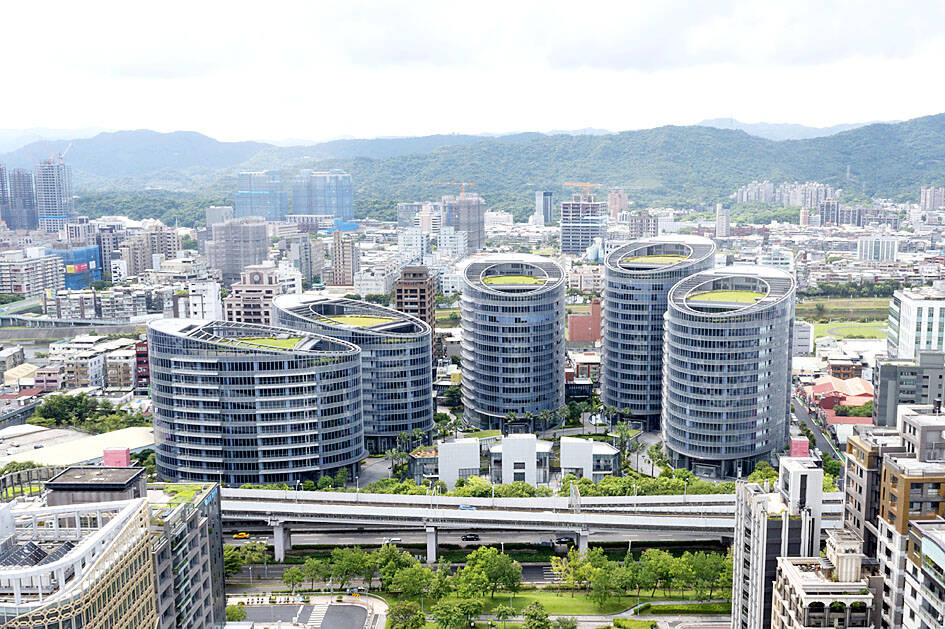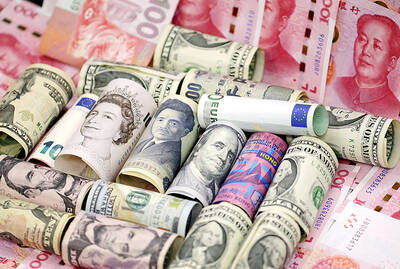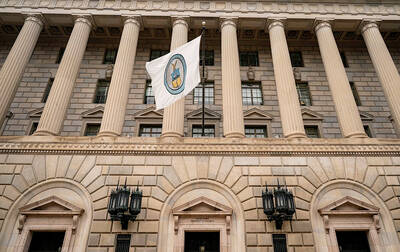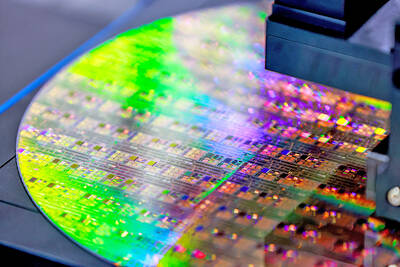Three of the four major units of Formosa Plastics Group (FPG, 台塑集團), the nation’s largest industrial conglomerate, swung back to profit last quarter on the back of improving core businesses, steady foreign exchange rates, rising investment gains and dividend income, the companies said yesterday in separate regulatory filings.
Nan Ya Plastics Corp (南亞塑膠) reported NT$3.26 billion (US$106.2 million), Formosa Chemicals and Fibre Corp (台灣化學纖維) posted NT$1.79 billion and Formosa Petrochemical Corp (台塑石化) made NT$8.58 billion in net profit in the third quarter of the year, the filings showed.
Those were compared with net losses of NT$4.1 billion for Nan Ya Plastics, NT$6.8 billion for Formosa Chemicals and NT$7.5 billion for Formosa Petrochemical in the second quarter.

Photo courtesy of Formosa Plastics Group
Nan Ya Plastics said last quarter’s earnings per share (EPS) of NT$0.41 were the highest in eight quarters, as income from electronic material products and plastic processing products increased, and losses from foreign exchange rates decreased, while investment gains expanded from the previous quarter.
The company posted losses per share of NT$0.05 in the first three quarters of the year.
Formosa Chemicals said its EPS last quarter was NT$0.3, compared with losses per share of NT$1.16 for the previous quarter, which the company attributed to continued efforts to optimize its product mix, adjust production to control inventory losses, expand niche products and new customers, and take orders selectively to maintain product prices.
The company reported losses per share of NT$0.94 in the first three quarters.
Formosa Petrochemical, which posted EPS of NT$0.9 last quarter, said the positive quarter came as income from its refining business increased amid higher crude oil prices, driven by escalating geopolitical tensions and tighter sanctions against Russian oil exports, while losses at its naphtha cracking business decreased mainly because of higher prices and lower inventory losses.
The company’s EPS in the first three quarters reached NT$0.5, it added.
Formosa Plastics Corp (台灣塑膠), the group’s flagship company, remained in the red last quarter with a net loss of NT$600 million, as new petrochemical capacities from China and the US’ “reciprocal” tariff measures dented market demand, pulling down product prices and impacting profit margins, it said.
However, last quarter’s losses per share of NT$0.09 were a significant improvement from losses per share of NT$1.04 in the previous quarter, it said.
It was NT$1.13 in the first three quarters, it added.
Overall, the four FPG units posted a combined net profit of NT$13.03 billion in the July-to-September quarter, compared with a combined net loss of NT$25.07 billion three months earlier, indicating an improvement in overall operations.
The four companies maintain a neutral outlook for this quarter, with only Formosa Plastics Corp expecting a quarterly increase in revenue as the industry enters the high season — benefiting demand for products including polyethylene, polypropylene and ethylene vinyl acetate — as well as due to the firm’s improved capacity utilization, it said.

Taiwan’s foreign exchange reserves hit a record high at the end of last month, surpassing the US$600 billion mark for the first time, the central bank said yesterday. Last month, the country’s foreign exchange reserves rose US$5.51 billion from a month earlier to reach US$602.94 billion due to an increase in returns from the central bank’s portfolio management, the movement of other foreign currencies in the portfolio against the US dollar and the bank’s efforts to smooth the volatility of the New Taiwan dollar. Department of Foreign Exchange Director-General Eugene Tsai (蔡炯民)said a rate cut cycle launched by the US Federal Reserve

The US government on Wednesday sanctioned more than two dozen companies in China, Turkey and the United Arab Emirates, including offshoots of a US chip firm, accusing the businesses of providing illicit support to Iran’s military or proxies. The US Department of Commerce included two subsidiaries of US-based chip distributor Arrow Electronics Inc (艾睿電子) on its so-called entity list published on the federal register for facilitating purchases by Iran’s proxies of US tech. Arrow spokesman John Hourigan said that the subsidiaries have been operating in full compliance with US export control regulations and his company is discussing with the US Bureau of

Businesses across the global semiconductor supply chain are bracing themselves for disruptions from an escalating trade war, after China imposed curbs on rare earth mineral exports and the US responded with additional tariffs and restrictions on software sales to the Asian nation. China’s restrictions, the most targeted move yet to limit supplies of rare earth materials, represent the first major attempt by Beijing to exercise long-arm jurisdiction over foreign companies to target the semiconductor industry, threatening to stall the chips powering the artificial intelligence (AI) boom. They prompted US President Donald Trump on Friday to announce that he would impose an additional

Pegatron Corp (和碩), a key assembler of Apple Inc’s iPhones, on Thursday reported a 12.3 percent year-on-year decline in revenue for last quarter to NT$257.86 billion (US$8.44 billion), but it expects revenue to improve in the second half on traditional holiday demand. The fourth quarter is usually the peak season for its communications products, a company official said on condition of anonymity. As Apple released its new iPhone 17 series early last month, sales in the communications segment rose sequentially last month, the official said. Shipments to Apple have been stable and in line with earlier expectations, they said. Pegatron shipped 2.4 million notebook